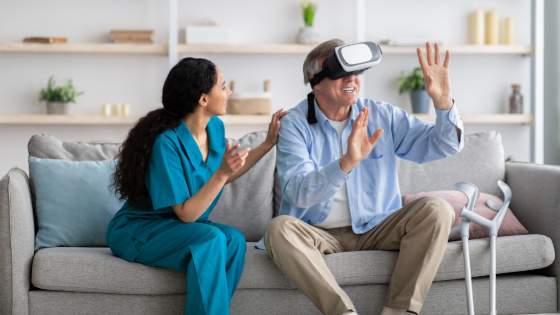Elder care has evolved over the years. It no longer focuses solely on meeting the basic needs of older adults. This care should prioritize their safety, dignity, and quality of life. Seniors want to retain their independence while preserving relationships. Technology is enabling them to do so in ways that couldn’t have been imagined a few decades ago.
Elder Care in the United States
For past generations, elder care options were typically limited to care by a family member or a nursing home. Loved ones would care for their aging relatives, allowing them to remain independent as long as possible. Today, many families choose to continue with this model so that their loved ones can stay in familiar surroundings. However, caring for a loved one can be physically and emotionally challenging for caregivers due to the complexities of caring for the elderly.
Experts predict older Americans will make up more than 16 percent of the population in a few short years. Expecting families to care for these individuals is no longer a realistic expectation. Most adults work today while raising children and handling other responsibilities. Asking them to take on the care of an aging relative will add additional stress to their lives, putting them at high risk of burnout. However, seniors often require care, as they frequently face a range of mounting health issues. Technology can help overcome these challenges.
Wearable Devices
Countless seniors today use wearable devices to monitor their health. Smartwatches are capable of tracking heart rate, activity, and other health metrics. Furthermore, they alert others when a senior falls or their health data changes. Wearable technology enables early intervention to improve health outcomes. Seniors can be proactive about their health when using these devices.
Telemedicine
Thanks to telemedicine, seniors can access healthcare without having to leave their homes. Video and phone calls enable them to see members of their medical team easily. Individuals living in remote areas may connect with specialists, and those who struggle to see their doctors due to mobility issues may utilize technology for many of their appointments.
Smart Home Devices
Smart home devices also help seniors maintain their independence and autonomy. They may use these devices to minimize their risk of falls. This smart home technology helps them feel safe in their own homes and provides them with peace of mind.
Voice Assistants
Voice-activated virtual assistants greatly benefit seniors. These devices can remind users when to take their medications and make emergency calls if they fall and are unable to get up. They may also conduct daily check-ins so family members know their loved ones are doing well.
Remote Monitoring
Healthcare providers often rely on remote monitoring devices to track their patients’ health. These devices allow them to intervene when changes are detected. The medical provider can adjust medications or take other steps to address issues as they arise, rather than waiting until the next scheduled appointment.
Artificial Intelligence
Artificial intelligence is being used to create personalized care plans for seniors. The individual’s health data is put into the system so the plan can address their unique needs. AI can predict health risks, allowing medical professionals to intervene and lead to improved healthcare outcomes.
America’s population is aging, and elder care must keep pace with this trend. Technology is helping this sector do so with the help of innovations such as wearable devices. Seniors can live independently longer, and caregivers have help when needed. Elder care is more personalized and proactive today, enabling seniors to live longer with dignity. They deserve nothing less.


